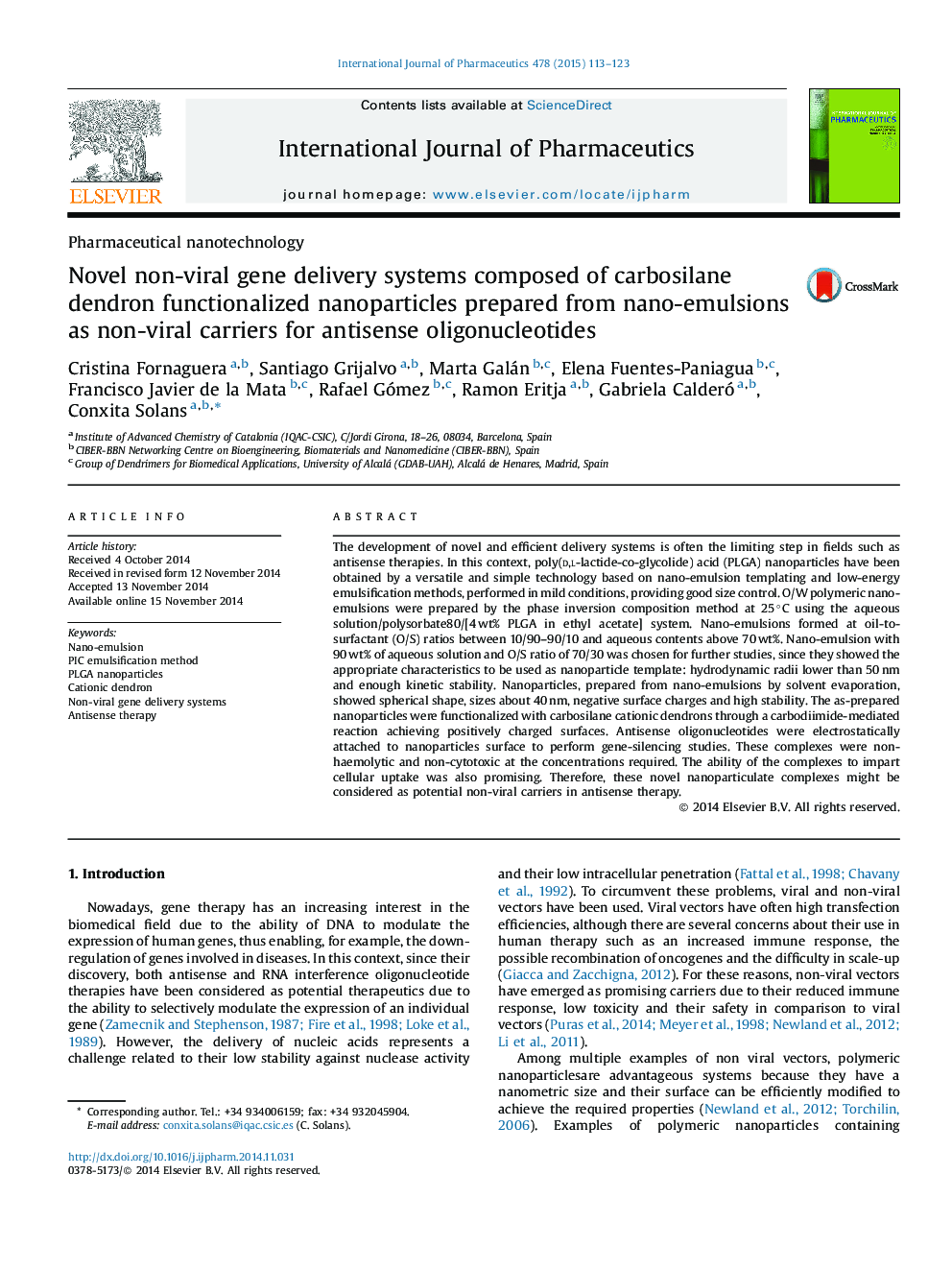| Article ID | Journal | Published Year | Pages | File Type |
|---|---|---|---|---|
| 2501608 | International Journal of Pharmaceutics | 2015 | 11 Pages |
The development of novel and efficient delivery systems is often the limiting step in fields such as antisense therapies. In this context, poly(d,l-lactide-co-glycolide) acid (PLGA) nanoparticles have been obtained by a versatile and simple technology based on nano-emulsion templating and low-energy emulsification methods, performed in mild conditions, providing good size control. O/W polymeric nano-emulsions were prepared by the phase inversion composition method at 25 °C using the aqueous solution/polysorbate80/[4 wt% PLGA in ethyl acetate] system. Nano-emulsions formed at oil-to-surfactant (O/S) ratios between 10/90–90/10 and aqueous contents above 70 wt%. Nano-emulsion with 90 wt% of aqueous solution and O/S ratio of 70/30 was chosen for further studies, since they showed the appropriate characteristics to be used as nanoparticle template: hydrodynamic radii lower than 50 nm and enough kinetic stability. Nanoparticles, prepared from nano-emulsions by solvent evaporation, showed spherical shape, sizes about 40 nm, negative surface charges and high stability. The as-prepared nanoparticles were functionalized with carbosilane cationic dendrons through a carbodiimide-mediated reaction achieving positively charged surfaces. Antisense oligonucleotides were electrostatically attached to nanoparticles surface to perform gene-silencing studies. These complexes were non-haemolytic and non-cytotoxic at the concentrations required. The ability of the complexes to impart cellular uptake was also promising. Therefore, these novel nanoparticulate complexes might be considered as potential non-viral carriers in antisense therapy.
Graphical abstractSchematic representation of the complete process of nanoparticle production from nano-emulsion and its surface functionalization to be used as non-viral gene delivery vectors.Figure optionsDownload full-size imageDownload high-quality image (215 K)Download as PowerPoint slide
